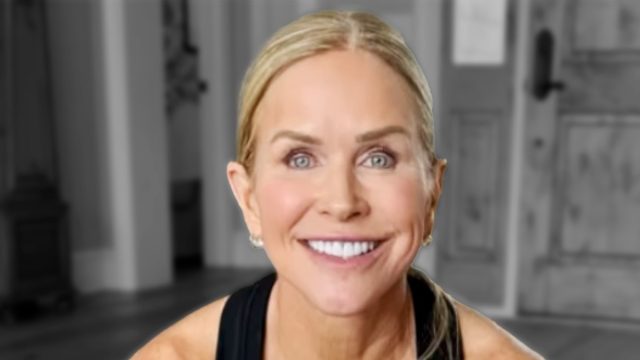Coach Reveals the Viral Workout Trend That Actually Works for Weight Loss

Not every workout you see on social media is all it's hyped up to be. However, there are some you should try. Chris Freytag is a fitness and lifestyle coach and the founder of Get Healthy U, a comprehensive fitness hub. In a new social media post, she reveals a fitness trend that lives up to its hype. "The Viral Workout Trend That Actually WORKS," she writes in the caption. Here is everything you need to know about it.
The 4-2-1 Method
She goes on to reveal the concept of the 4-2-1 method:
- 4 days of strength training workouts
- 2 days of cardio
- 1 day of mobility/ activity recovery.
It Is Effective for Weight Loss and Building Muscle
"This 4-2-1 training method that took off on Tik-Tok has 4 strength training days, 2 days of cardio, and 1 day of mobility or active recovery each week," she writes. "This 4-2-1 workout plan can be an effective way to lose weight, maintain muscle mass, and improve your overall fitness."
She Also Endorses This Walking Hack
In another post, she reveals a walking hack to improve your health. "Here's a game-changer: Walking for 10 minutes after each meal can be more effective than walking for a full hour at another time of day," she says. "I am a follower of the @gluecosegoddess (Jessie Inchauspé), who says walking after a meal is a crucial practice to help manage blood sugar levels by preventing large spikes and promoting better glucose absorption into your muscle!"
Walk After Every Meal
"If you can just get up and take some steps: 10 minutes after breakfast, lunch and, dinner," she continues. "That's only 30 minutes total—but research shows you'll see more health benefits than from one continuous 60-minute walk!"
There Are Lots of Benefits of Walking After Meals
https://www.instagram.com/reel/DE-TIkxSzg2/?utm_source=ig_embed&utm_campaign=loading
She explains that fat loss isn't the only benefit of walking after you eat. "Besides getting in some steps, post-meal walks help stabilize blood sugar levels, boost digestion, and increase energy and metabolism.
Break Walking Into Smaller Chunks to Make It More "Doable"
"So break it down into smaller chunks and walk around the block; hop on your walking pad; march around your house; just move after every meal," she concludes. She adds that many people will find that this method makes it more "doable."




